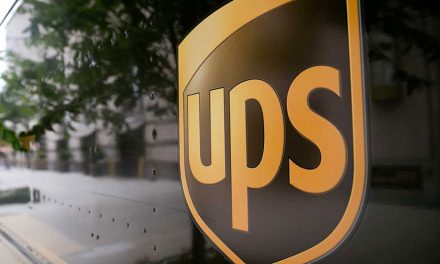
7 Ways to Improve Your B2B e-Commerce Home Delivery Strategy
Increase in e-commerce in business-to-consumer milieu now makes home delivery a key factor in logistics and transportation management arena
From MANAGING LOGISTICS, January 1st, 2001
ORIGINAL TITLE: 7 Ways to Improve Your B2B e-Commerce Home Delivery Strategy.
FULLTEXT:
The rise of business-to-consumer e-commerce has made home delivery a major part
of the logistics and transportation management arena. Most logistics managers
have already begun working on this area. Nonetheless, a profitable way to get
goods to the consumer's home still eludes many companies. The problem is
twofold–how to get products to consumers and what products to deliver. Not
everything a company sells should be available for home delivery.
Snappy marketing campaigns and sophisticated information technology will not
bring profitability to B2C shippers if the products being sold are not
conducive to home delivery.
ML went seeking some guidance in how to develop a successful logistics home
delivery strategy and found the following from AMR Research, Inc. (Boston;
617-542-6600).
Unless you have your own same-day delivery fleet, you need to make a choice
between several types of services.
1. Who should make the delivery? The industries that have figured out home
delivery–white goods, furniture, catalogs and prepared foods-are being joined
by new industries and service organizations, such as specialized carriers and
Delivery Exchanges (DXs). These newcomers (described below) provide same-day
delivery services in an attempt to recreate the feeling of immediacy and
instant gratification that customers get with in-store shopping.
Asset-based home delivery service providers are leveraging their experience in
contract logistics services to expand upon or introduce home delivery
operations. The three leading parcel carriers, FedEx Corp. (Memphis), United
Parcel Service of America, Inc. (UPS, Atlanta) and the United States Postal
Services (USPS, Washington, D.C.) are each introducing new services in
attempts to dominate home delivery.
As part of its FedEx Home Delivery Service, made up of a network of
independent courier contractors, the company offers shippers value-added
services: Saturday and evening deliveries, day-and time-specific delivery
guaranteed within a one-hour time window, a money-back service guarantee and
signature service ensuring capture of a signature for every package delivery.
UPS recently introduced new home delivery service for shippers to include a
cash-on-delivery service that collects funds at the time of delivery and
electronically deliveries them into the shipper's account, real-time package
tracking, Web-based signature tracking to verify proof of delivery, and an
electronic merchandise return service.
Finally, USPS, which signed a partnership with Emery Worldwide (Redwood City,
Calif.) to offer home delivery service, includes prepaid return labels that
customers can download and print from the shipper's Web site, a Web-based
manifest mailing system, and proof of delivery service.
Traditional Fulfillment Service Providers (FSPs) are also getting into the act
by leveraging their existing infrastructure. These include Global Logistics
Solutions, Inc. (Dennis, Mass.), HomeDirect USA (a division of Bekins Co.,
Hillside, Ill.), Hub Group Distribution Services (Arlington Heights, Ill.),
Menlo Logistics (Palo Alto, Calif.), Sameday.com (City of Industry, Calif.)
and Merchants Home Delivery (a subsidiary of Exel plc, Columbus, Ohio).
The FSPs typically specialize in delivering large or complex items and offer
additional value-added services, such as setup, installation, and the removal
of packing materials and old product.
A third group of carriers (DX) comprises Web-based logistics service providers
that essentially match shippers with local carriers, enabling shippers to
offer their customers same-day delivery of select items. Once a customer
selects the same-day shipping option, the order is routed to the request.
The courier is directed to a stocking location close to the customer, usually
a retail outlet, where it picks up the order and delivers it to the customer.
Through all this, the DX never takes ownership of the goods being delivered.
It typically generates revenue by charging the shipper more for the delivery
than it pays the courier for its services. The DX is the single point of
settlement for both the shipper and the courier and is responsible for
tracking the delivery and settling claims. Being non-asset-based, DX vendors
can expand to new geographies quickly.
There are a number of newly established DXs on the market: DeliverEtoday.com
(Redwood City, Calif.), dNet (San Francisco), LaserShip.com (McLean, Va.),
NationStreet, inc. (Westborough, Mass.), Next Jet, Inc. (Dallas), and Online
Delivery Networks (Wilmington, Del.).
While the majority of these are suited for carrying small parcels,
NationStreet is focused on delivering larger, more complex goods like
furniture and appliances. Like the FSPs, NationStreet offers the value-added
service of setting up the product for the customer.
And Next Jet focuses on longer distribution deliveries that are mission
critical, like a part for a production line. Thus, the company can expedite
any shipment.
2. Offer a profitable product mix. Consumers are generally more willing to pay
for shipping on items that are large and difficult to transport or are hard to
get where they live. But they place less value on home delivery and are less
willing to pay much for the convenience of receiving goods at their home on
items that are locally available or are considered a commodity or
replenishment items.
3. Choose a product line that can be profitably shipped to customers. This
requires a thorough understanding of your industry nuances and customer base.
4. Don't take on the burden alone. Corporate responsibilities for a successful
home delivery program do not rest solely on the shipper's logistics
department. A company's sales and marketing activities have as much to do with
it.
5. Attracting and retaining profitable customers. Density is key. The more
completed deliveries a driver can make in a day, the more profitable the
route. In B2B deliveries, shippers and carriers can design high-density routes
fairly easily, since business customers tend to be clustered in small areas
and there is almost always someone at the drop-off location to receive the
delivery. In addition, these routes do not vary much from day to day or week
to week and the shipments typically move by full truckloads, as opposed to the
par,gel shipments found in B2C. Consequently, B2B shipments are two to three
times less expensive than B2C deliveries.
6. Managing customer expectations. An elaborate Web site will not motivate
customers to place repeat orders. Timely delivery of an order that meets or
exceeds the customer's expectations will. The tree value of a B2C order begins
only when it successfully passes from the shipper to the customer. It is the
quality of that exchange that leaves the customer with a lasting impression of
the shipper and is a key determinant of whether that customer will place
another order.
7. Using available technology. IT is not the problem in home delivery, since
very good software applications are on the market. The primary problems
shippers face is management delivery costs and ensuring a secure handoff of
the merchandise to the customer, a process in which IT has only a marginal
effect.
ISSN 1097-2021; Issue 01-01; Page 1,12-14
For more information, please contact IOMA Subscriber Services, 212-244-0360;
fax: 212-564-0465; email: [email protected]. Visit our Website at
www.ioma.com. Copyright 2001 Institute of Management & Adminstration, 29 W. 35
Street, New York, NY 10001-2299
(c) 2001 Resp. DB Svcs. All rts. reserv.
$$
MANAGING LOGISTICS, 01st January 2001













